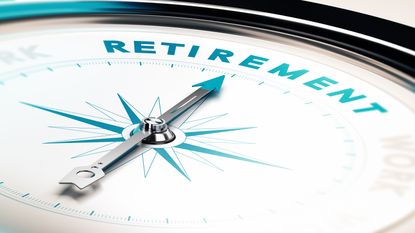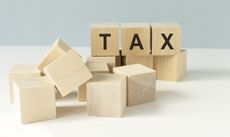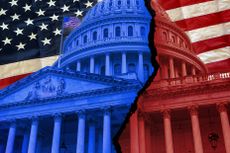
The SECURE 2.0 Act makes major changes to 401(k), IRA, Roth, and other retirement savings plans.
When you purchase through links on our site, we may earn an affiliate commission. Here’s how it works.

The SECURE 2.0 Act is a recently enacted significant piece of legislation that has brought about substantial changes to the retirement account rules in the United States. These changes affect retirement savings plans such as 401(k), 403(b), IRA, Roth accounts, and related tax breaks.
The primary objective of SECURE 2.0 is to encourage more workers to save for retirement. However, complex changes have confused some taxpayers and plan sponsors. Therefore, it is important to understand the key points of the law.
Here's what you need to know.
Be a smarter, better informed investor.
Save up to 74%
Profit and prosper with the best of expert advice on investing, taxes, retirement, personal finance and more - straight to your e-mail.
Profit and prosper with the best of expert advice - straight to your e-mail.
More than 90 provisions in SECURE 2.0 cover all types of retirement savings plans. Some requirements are in place as of last year. Other provisions become effective this year, in 2024, or later years, i.e., 2025, 2026, or 2027.
Some changes in SECURE 2.0 involve:
This SECURE 2.0 summary highlights key provisions of the new law and potential implications for your retirement planning.
RMD age change (2023). Under the law before SECURE 2.0, you generally had to take required minimum distributions (RMDs) from your retirement plan beginning at age 72. SECURE 2.0 increased the required minimum distribution age to 73 as of January 1, 2023. However, if you turned 72 in 2022, you had to take your first RMD by April 1, 2023.
The bump to age 73 is one of several new RMD rules. However, the RMD age eventually moves to 75.
Delays in the age for taking RMDs raise tax implications and can present practical challenges. The latter can be particularly significant for retirees with lower incomes, who typically use RMDs to cover living expenses.
For example, pushing the RMD age back might be a "nonevent" for some retirees, according to Paul Camhi, vice president and senior financial advisor at The Wealth Alliance, who told Kiplinger, "Most [older adults] can't afford to wait until 72 [to take RMDs], let alone until age 75."
RMD rule delay for inherited IRAs. The IRS is again delaying the implementation of IRA RMD final rules, this time until 2025.
The latest RMD rule delay allows beneficiaries of inherited IRAs to understand distribution requirements better and take payouts. The extension offers more time to roll over distributions from earlier this year that were mischaracterized as RMDs.
RMDs and Roth 401(k)s. Beginning this year, 2024, the SECURE 2.0 Act eliminates RMDs for qualified employer Roth 401(k) plan accounts.
Previously, there was a difference in the rules that applied to Roth 401(k) accounts in employer plans versus Roth IRAs (i.e., the latter were not subject to required minimum distributions).
As a result, it is important to consider how SECURE 2.0 RMD changes could impact you and plan accordingly.
SECURE 2.0 contains numerous provisions that impact 401(k) plans. These provisions take effect in various years but deal with issues including financial incentives to contribute to a retirement plan, hardship withdrawal rules, automatic enrollment, contributions limits, and part-time worker access.
Each is mentioned below.
Small incentives to contribute to a retirement plan. The SECURE 2.0 Act allows your employer to offer small financial incentives (e.g., low-dollar gift cards) to help boost employee participation in a workplace retirement plan.
This provision became effective beginning January 2023.
Emergency expense distributions. Beginning in 2024, under the SECURE 2.0 Act, you will be allowed to take an early “emergency” distribution from your retirement account to cover unforeseeable or immediate financial needs.
That emergency distribution of up to $1,000, could only be taken once during the year, but won't be subject to the usual additional 10 percent tax that applies to early distributions.
But: if you choose not to repay the distribution within a certain time, you won't be allowed to take other emergency distributions for three years.
Automatic enrollment in retirement plans. Beginning in 2025, the SECURE 2.0 Act expands automatic enrollment in retirement plans. The rationale is that automatic enrollment in 401(k) plans has been shown to increase participation.
According to the U.S. Department of Labor, "Whether you already have a 401(k) plan or are considering starting one, automatic enrollment 401(k) plans offer many advantages."
In addition to helping small businesses attract and retain employees, the Labor Department points to tax advantages associated with 401(k) participation (including the deduction of employer contributions and deferred taxation on contributions and earnings until distribution).
With some exceptions for small businesses, SECURE 2.0 requires 401(k) and 403(b) plans to automatically enroll eligible participants, who can opt out of participation.

Higher catch-up contribution limit. Right now, if you are 50 or older you can make catch-up contributions to your retirement plan up to certain limits. SECURE 2.0 increases those limits, beginning in 2025, to the greater of $10,000 or 50 percent more than the regular catch-up amount if you are 60, 61, 62, or 63 years old. After 2025, those amounts will be indexed for inflation.
Also, as of 2024, SECURE 2.0 Act rules, which are now delayed, were designed to impact how eligible workers with incomes over $145,000, make catch-up contributions. (The income threshold will be adjusted for inflation.) See below for more information on the delay of this rule to 2026.
Under SECURE 2.0, if you are at least 50 years old and earned $145,000 or more in the previous year, you can make catch-up contributions to your employer-sponsored 401(k) account. But you would have to make those extra contributions on a Roth basis, using after-tax money.
Note: The Roth catch-up rule was originally supposed to take effect in 2024. However, due to problems with implementing Roth catch-up contributions, the IRS announced that Roth catch-up contributions for high earners age 50 or over won’t be required until 2026. (That’s a two-year delay of the new rule.)
Keep in mind, however, that those catch-up contributions will eventually (in 2026), have to be made on a Roth basis if your income meets or exceeds the $145,000 threshold.
Employer fund match for student loan payments. Under the SECURE 2.0 Act, your employer can make a matching contribution to your retirement plan account based on your student loan payment amount. This is designed to address high student loan debt keeping people from saving for retirement.
This student loan match provision became effective as of 2024. For more information, see IRS: Here's How to Get a 401(k) Match for Your Student Loan Payment.
Note: Student loan payments resumed in fall 2023 since the U.S. Supreme Court struck down Biden's initial student loan forgiveness plan.

Roth rollover option for 529 plans. Beginning in 2024, SECURE 2.0 changes 529 plan rules.
Annual limits for the rollover would have to be within the annual contribution limit and there will be a $35,000 lifetime limit on what can be rolled to the Roth IRA.
Saver’s match. Beginning in 2027, the SECURE 2.0 Act replaces the nonrefundable Saver’s Credit for some IRA and retirement plan contributions with a federal matching contribution that will be deposited into your IRA or retirement plan. The so-called "Saver’s Match" will be 50% of IRA or retirement plan contributions up to $2,000 per person. However, some income limits and phase-outs will apply.
The SECURE 2.0 Act contains many more provisions that could impact your retirement savings account (and in turn, potentially your taxes and tax breaks).
Some of those provisions involve everything from part-time worker access to employer retirement plans, and small business tax credits, to contributions to SIMPLE, and SEP plans.
Other provisions address issues surrounding stock ownership and savings bonds. Consult a financial advisor or trusted tax professional if you have questions or concerns about how these changes might impact you or your taxes.

Retirement savings “lost and found.” Have you ever lost track of your 401(k)? Well, the SECURE 2.0 Act enables the creation of a searchable database to help people find retirement benefits that they lost track of. The retirement savings “lost and found” will be housed at the Department of Labor and be created within the next two years.
Data show that millions of 401(k) accounts are regularly forgotten, amounting to nearly a trillion dollars in unclaimed retirement benefits.
Profit and prosper with the best of Kiplinger's advice on investing, taxes, retirement, personal finance and much more. Delivered daily. Enter your email in the box and click Sign Me Up.
By submitting your information you agree to the Terms & Conditions and Privacy Policy and are aged 16 or over.
Senior Tax Editor, Kiplinger.comAs the senior tax editor at Kiplinger.com, Kelley R. Taylor simplifies federal and state tax information, news, and developments to help empower readers. Kelley has over two decades of experience advising on and covering education, law, finance, and tax as a corporate attorney and business journalist.

Could the Election Impact Interest Rates? The election can indirectly impact interest rates, but the Federal Reserve remains in the driver's seat when it comes to borrowing costs. By Charles Lewis Sizemore, CFA Published 16 September 24
 The smooth surface of a lake with some ripples." width="" />
The smooth surface of a lake with some ripples." width="" />
Interest Rate Cuts and Inflation: What's Really Going On? For more than two years, we've heard a steady drumbeat of news highlighting inflation and its impact on interest rates. The correlation seems clear, but the issue is actually more complex. By Jared Elson, Investment Adviser Published 16 September 24

Colorado’s New Property Tax Reform Could Save You Hundreds Property Tax The Centennial State just signed a new property tax bill into law. Here’s what you need to know. By Gabriella Cruz-Martínez Published 12 September 24

Five New Tax Credits in Harris Economic Plan: What to Know Election 2024 Democratic nominee, Vice President Kamala Harris has proposed several tax breaks. Here's what you need to know. By Kelley R. Taylor Last updated 12 September 24

New York Sending School Tax Relief (STAR) Checks Tax Relief Are you receiving a NY STAR credit or exemption for your property taxes? By Kate Schubel Published 6 September 24

How the Election Could Impact the EV Tax Credit Tax Credits It’s no secret electric vehicles have become a bit of a political issue. But what does that mean for your EV tax break? By Kate Schubel Last updated 6 September 24

How Trump and Harris Might Handle Expiring TCJA Tax Cuts Election 2024 Many key provisions of the TCJA will expire soon. Here’s why it matters during the 2024 election cycle. By Gabriella Cruz-Martínez Last updated 5 September 24

How Much Is the Child Tax Credit for 2024? Tax Credits The refundable amount of this tax break is slightly higher for the 2025 tax filing season. Here’s what you need to know. By Gabriella Cruz-Martínez Last updated 25 August 24

New York Residents to Receive Child Tax Credit Checks in Mail Tax Credits The Empire State is sending millions of dollars — find out why and if it applies to your family. By Kate Schubel Last updated 16 August 24

$145 Million in ‘Senior Freeze’ Property Tax Checks Mailed Property Tax What you need to know about New Jersey's property tax relief program for older adults. By Kate Schubel Published 23 July 24
Kiplinger is part of Future plc, an international media group and leading digital publisher. Visit our corporate site.
© Future US, Inc. Full 7th Floor, 130 West 42nd Street, New York, NY 10036.